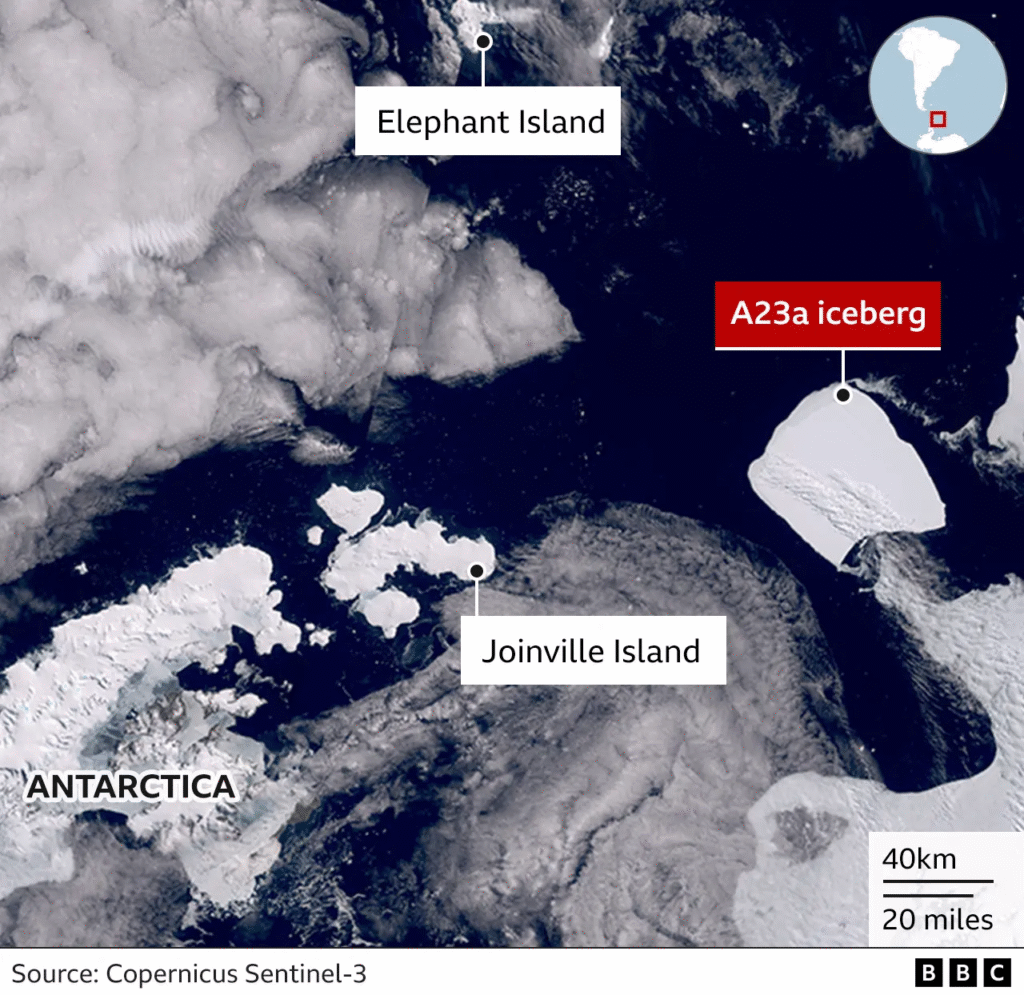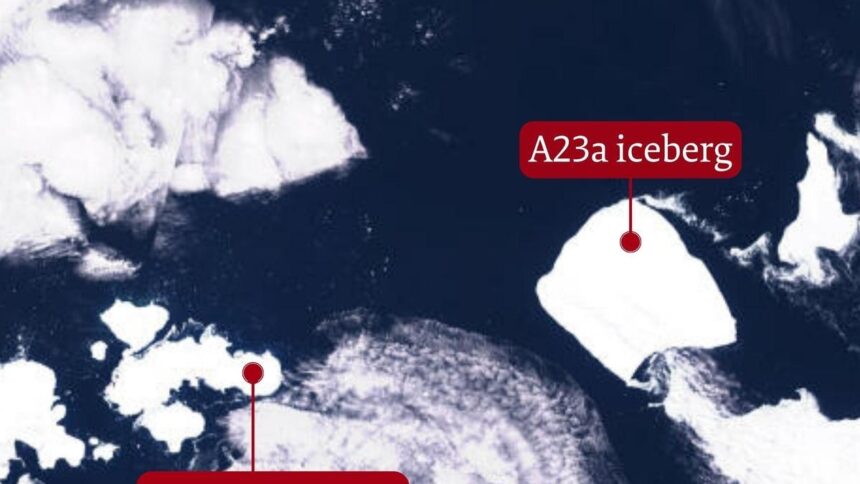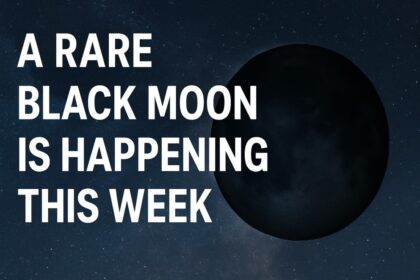Antarctica, Sept. 5 — The world’s largest iceberg, known as A23A, is rapidly breaking apart in what scientists describe as a “death spiral,” raising concerns about its imminent disappearance. Experts monitoring the iceberg’s trajectory say it is highly unlikely to survive past November as warmer temperatures and ocean currents accelerate its disintegration.
A23A, which initially calved off Antarctica’s Ronne Ice Shelf in 2021, measures roughly 2,600 square kilometers—comparable to the size of Luxembourg. The iceberg’s fragmentation has intensified over recent weeks, fueled by increasing exposure to warmer Antarctic waters and turbulent sea conditions, according to researchers tracking the event via satellite imagery.

Dr. Emily Carlson, a glaciologist with the British Antarctic Survey, explained, “The breakup of A23A is unprecedented in scale. As the iceberg undergoes repeated fracturing, large chunks are separating and melting much faster than expected. Within two months, we anticipate very little will remain intact.”
While the disintegration of large icebergs is a natural process, the speed at which A23A is breaking apart is raising alarms about accelerating climate change effects. Icebergs of this size can influence ocean circulation and local ecosystems, and their melting contributes to sea-level rise.
The melting of A23A also opens navigational hazards due to the scattered ice debris, which poses risks to vessels operating in Southern Ocean shipping routes. Authorities have issued warnings, urging caution for the remainder of the year.
Environmental experts highlight that A23A’s fate underscores the urgency of global climate action. “This dramatic collapse is a visible symptom of the warming polar regions,” said Dr. Mark Halloran, an oceanographer. “We must be prepared for more such events as the planet continues to warm.”
As the iceberg heads toward its final breakup, scientists continue to monitor closely, gathering critical data to better understand the complex interactions accelerating its demise and the broader implications for polar ice stability.







